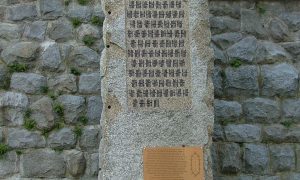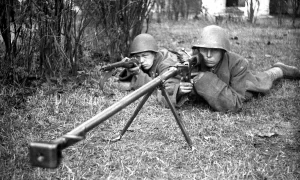Victory Day over Japan (also known as VJ Day, Victory on Pacific Day or VP Day) is the day on which Imperial Japan surrendered in World War II, bringing the war to an end. This term was applied to both days when the initial announcement of Japan’s surrender was made – August 15, 1945 in Japan, and due to the time zone difference – August 14, 1945 (when it was announced in the USA and USA). the rest of America and the East Pacific Islands) – and also until September 2, 1945, when the document of surrender was signed, officially ending World War II.
August 15 is the official VJ Day for the United Kingdom, while the official US celebrations are September 2. The name, VJ Day, was chosen by the Allies after they named VJ Day for victory in Europe.

On September 2, 1945, a formal surrender took place aboard the battleship USS Missouri in Tokyo Bay. In Japan, August 15 is commonly referred to as “the day of remembrance of the end of the war”; the official name of this day is “the day of mourning those killed in the war and praying for peace”
Surrender
Events before VJ Day
On August 6 and 9, 1945, the Allies dropped atomic bombs on Hiroshima and Nagasaki, respectively. On August 9, the Soviet Union declared war on Japan. On August 10, the Japanese government announced its intention to surrender in accordance with the provisions of the


Potsdam Declaration.
News of the Japanese offering kicked off early celebrations around the world. Allied soldiers in London danced in a row on Regent Street. Americans and French in Paris marched on the Champs Elysees singing “Don’t shield me.” American soldiers in occupied Berlin shouted “It’s over in the Pacific” and hoped that they would not be transferred there to fight the Japanese. The Germans declared that the Japanese were wise enough to – unlike themselves – surrender in a hopeless situation, and were grateful that the atomic bomb was not ready in time to be used against them. Moscow: Newspapers briefly reported on the atomic bombings without any comment. Although “Russians and foreigners could hardly talk about anything else,” the Soviet government refused to make any statements about the significance of bombs for politics or science.
In Chongqing, the Chinese launched firecrackers and “almost buried [the Americans] as a token of gratitude.” In Manila, residents sang “God Bless America.” In Okinawa, six people were killed and dozens were injured when US soldiers “took all weapons within reach and started firing into the sky” to celebrate; the ships sounded at headquarters and opened fire with anti-aircraft guns, as their crews believed that a kamikaze attack was taking place. On Tinian Island, B-29 crews preparing for their next flight over Japan were told it had been canceled, but they couldn’t celebrate because it might be rescheduled.
Japan’s adoption of the Potsdam Declaration
Shortly after noon Japan standard time on August 15, 1945, Emperor Hirohito’s declaration of Japan’s acceptance of the terms of the Potsdam Declaration was broadcast to the Japanese people by radio. Earlier in the day, the Japanese government broadcast an announcement on Radio Tokyo that “the adoption of the Potsdam Proclamation [will be] imminent,” and notified the Allies of the surrender by telegramming US President Harry S. Truman. Swiss Diplomatic Mission in Washington, D.C. Truman’s nationwide broadcast aired at 7 p.m. (daytime) in Washington, D.C.) on Tuesday, August 14, announcing the announcement and that the official event is scheduled for September 2 … In his announcement of Japan’s surrender on August 14, Truman said that “the proclamation of VJ Day must wait after the official signing. terms of the surrender of Japan.”
Since the European Axis powers had surrendered three months earlier (Victory Day), VJ Day was the de facto end of World War II, although a peace treaty between Japan and most of the Allies was not signed until 1952, but between Japan and the Soviet Union until 1956. In Australia, the name VP Day was used from the beginning. The Canberra Times on August 14, 1945, mentions the celebration of Vice President’s Day, and in accordance with the Australian War Memorial this year, the government has declared a public holiday in honor of Vice President’s Day.
Public celebrations
After the news of the Japanese acceptance and before Truman’s announcement, civilians began to celebrate “as if joy had been rationed and accumulated over the three years, eight months and seven days that have passed since Sunday, December 7, 1941” (the day of the Japanese attack on Pearl – Harbor), Life magazine reports. In Washington DC, a crowd tried to break into the White House grounds, shouting “We want Harry!”
In San Francisco, two naked women jumped into a pond at the Civic Center while soldiers cheered. Seriously, thousands of drunken people, the vast majority of whom are naval personnel who did not serve in the theater of war, began what in 2015 the San Francisco Chronicle described as “a three-day orgy of vandalism, looting, and assault. , robbery, rape and murder “and” the deadliest riots in the history of the city “, which resulted in more than 1,000 injuries, 13 killed and at least six women were raped. None of these actions resulted in serious criminal charges, and no civilian or military officials were punished, leading the Chronicle to conclude that “the city was just trying to pretend there was never any riot.
The largest crowd in New York City’s Times Square gathered to celebrate. The victory was announced by a headline in the zip-up news feed on One Times Square, which read: “OFFICIAL *** TRUMAN ANNOUNCES JAPANESE SUBMISSION ***”; the six asterisks represented the branches of the US military. In the sewing area, workers threw away scraps of fabric and braid, leaving a pile five inches deep in the streets. The news of the end of the war sparked “frenzy from coast to coast …













